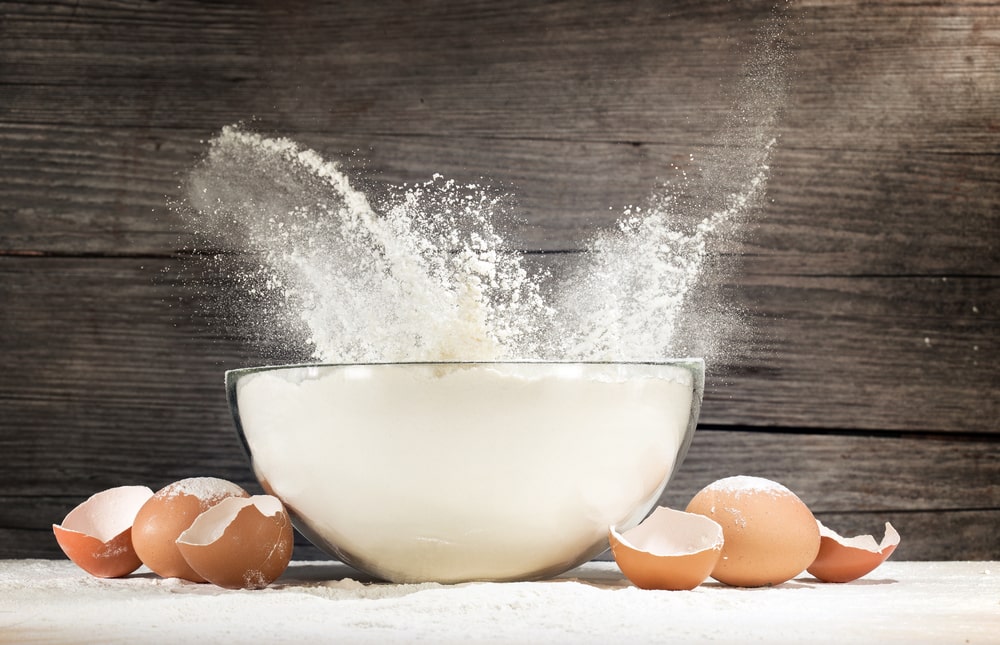
There are only a few people that care about the exact type of flour that is listed in the recipe. Many people do not bother to find the exact type of flour they need for making a perfect cake, because who has enough space to store all types of flour if they’re not in daily use.
However, knowing the difference between the types of flour and their importance in recipes is essential to be an effective chef.
What is Cake Flour?
Cake flour, which is finely milled to produce a delicate batch of flour along with low protein content of about only 8%, is used for making delicious cakes. Cake flour usually comes bleached because of the off-white color requirement of baking recipes.
Because of its fine milling, it provides a super tender texture after cooking and results in fine crumbs. Not exactly like self-rising flour, but cake flour also rises and gives a fluffy and soft appearance to your cakes. Swan Downs cake flour is one fine kind of cake flour available in the market.
Don’t get confused because of the name because cake flour is not used in all cake recipes, however, it covers a wide range of cake recipes. The texture of cakes made with cake flour is distinguishing because of the low protein content because it allows the layers of cake to have structure and allows a very soft and fluffy texture.
Swans Down Cake Flour Substitute
Can You Substitute Swan Down Cake flour with Any Other type of Flour?
No, because of the different protein content and the making of each type of flour which can greatly affect the recipe. Chefs do keep all the types of flours because they have almost a regular use of these and also a big pantry as well.
However, people like us neither have this much space nor we are practicing different recipes to use all the types of flour. The first thing that is similar about all the types of Swan Down flour is, they all are made from the wheat grind. However, the difference is, how they are milled, the type of wheat used for milling, even the harvesting time of the wheat.
Apart from all these, the major difference is made due to the variable protein content. The amount of protein content tells how much gluten can be formed in a kind of flour. Gluten is the building and texture-determining component of any flour. More gluten provides more thick and gooey cake, low gluten gives light and airy cakes.
You must keep in mind that the exact protein content in every flour depends on the brand of cake flour you are using and also by country as well. Summing up! Your selection of flour greatly affects the texture and structure of your cake.
How to Make a Cake Flour Substitute by Yourself?
Do you know what’s best about cake flour substitute? It won’t make you visit the market if you have all-purpose flour and cornstarch in your pantry. You can easily make your Swan Down cake flour substitute by yourself, following the steps below.
- Pick a bowl and make sure it’s dry(no moisture at all, otherwise the flour will stick to the moisture disturbing the approximation), then add a cup of all-purpose flour in the bowl.
- Use a spoon to remove 2 spoons of added all-purpose from the bowl and put it back in the container. By removing 2 spoons of all-purpose flour, we are reducing the protein content from our to-be-prepared came flour.
- Now add 2-tablespoons of cornstarch in place of the removed all-purpose flour. Cornstarch will act as a tenderizing agent in the mixture because it inhibits gluten development from protein. With less gluten development, your flour will be more liquidy and tender.
- Make sure that you sift the mix of cornstarch and flour at least 5 times. Sifting 5 times can settle and combine the mixture well, moreover, it will aerate the flour.
- You have successfully prepared your cake flour with the help of only two basic ingredients.
Hopefully, this blog helps you in substituting Swan Down cake flour with the home-made two-ingredient cake flour.